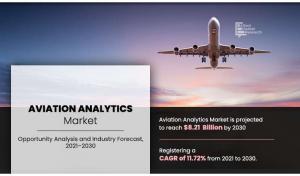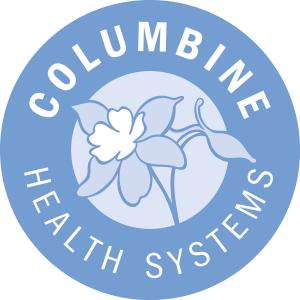Global Market Analysis on Parylene market, Ursolic Acid market, Nickel Hydroxide market forecasted till 2030
SEATTLE , WASHINGTON, USA, June 29, 2023/EINPresswire.com/ — Executive Summary:
The global Parylene market is anticipated to reach USD 109.00 million by 2030, growing at a CAGR of 2.32%. The increasing demand for Parylene coatings in various end-use industries such as electronics, aerospace, and medical devices is the primary factor driving the market’s growth. The market’s growth is also attributed to the rising demand for electronic devices owing to technological advancements and the trend of the Internet of Things (IoT). Additionally, the growth of emerging economies and the increasing demand for Parylene coatings from the automotive industry are expected to drive market growth during the forecast period.
Parylene is a type of polymer coating that is used in many industries due to its unique properties such as chemical inertness, biocompatibility, and high dielectric strength. The global parylene market is highly competitive, and the major players include KISCO, Curtiss-Wright, Chireach Group, Penta Technology, and Suzhou Paihua Coating.
Overall, these companies are driving the growth of the parylene market by providing high-quality coatings that meet the increasing demand for reliable and durable coatings. The sales revenue figures of a few of the companies are as follows:
– KISCO: $36 million (2019)
– Curtiss-Wright: $2.4 billion (2019)
– Chireach Group: $13 million (2019)
– Penta Technology: $10 million (2019)
– Suzhou Paihua Coating: $5 million (2019)
Parylene is a highly versatile and reliable polymeric coating material that exhibits outstanding protective and insulating properties. It is used extensively in a wide range of industrial and commercial applications, including electronics, aerospace, medical devices, and automotive components. There are several types of Parylene coatings available in the market, each with unique properties and advantages.
Parylene, a thin and transparent polymer film, finds its application in various fields, including military and aerospace, electronics, medical, automotive, and other industries. In the military and aerospace sector, Parylene is utilized as a conformal coating to protect electronic equipment from harsh environmental conditions such as extreme temperatures, dust, and moisture. In electronics, it is used as an insulator and a moisture barrier for electronic devices. The medical industry uses Parylene as a biocompatible coating for implantable medical devices, while the automotive industry employs it as an anti-corrosion coating for metal parts. Other applications of Parylene include optics, sensors, and MEMS.
The parylene market is expected to be dominated by the Asia Pacific region, mainly due to the significant growth of end-use industries such as electronics, automotive, and healthcare in countries like China, Japan, and India. The region is expected to hold a market share of around 40% by 2025.
North America is projected to hold the second-largest market share, primarily due to the presence of major players and the high demand for parylene in industries such as aerospace, defense, and medical devices. The region is estimated to hold around a 25% market share by 2025.
Europe is also expected to witness significant growth in the parylene market due to the growth of the automotive industry and the increasing demand for advanced electronics. The region is projected to hold a market share of around 20% by 2025.
Other regions such as Latin America and the Middle East & Africa are expected to witness moderate growth in the parylene market, with a projected market share of around 10% and 5% respectively by 2025.
Click here for more information: https://www.reportprime.com/parylene-r148
Executive Summary:
The global Ursolic Acid market is expected to witness significant growth over the forecast period. Increasing awareness about the benefits of Ursolic Acid for various medical conditions is one of the major factors driving market growth. The market is also being driven by increasing demand from the food and beverage industry. North America is expected to dominate the Ursolic Acid market due to the growing popularity of nutraceutical products and the increasing geriatric population. The market is highly competitive, with many established players and new entrants competing for market share. The market size for Ursolic Acid is expected to reach $9.00 million by 2030.
The global Ursolic Acid market is highly competitive and is dominated by a few major players. These players are continuously striving to expand their product portfolio and enhance their market share by adopting various strategies such as partnerships, mergers & acquisitions, and agreements. Some of the key players in the market are Sabinsa, Sami Labs, Changsha Staherb Natural Ingredients, Run Shaanxi Days of Bio-tech, Shaanxi Huike Botanical Development, Changsha Luyuan Bio-Tech, Xuancheng Baicao Pharmaceutical, Changsha E.K HERB, Shaanxi Jintai Biological Engineering, Hunan NutraMax, Xi’an TonKing, MicroHerb, Geneham Pharmaceutical, Acetar Bio-Tech, Shaanxi Hopeland Chem-Tech, Xi’an Tianben Bio-Engineering, AiKan Biological, Ningshan Guosheng Biological Technology, Yongzhou Huamao Biotechnology, Baoji Guokang Bio-Technology, Hunan Warrant Pharmaceutical, Shaaxi Haiqiang Phytochemical.
In terms of sales revenue, some of the key players in the market include Sabinsa, which had a revenue of $147.7 million in 2019, Sami Labs, which had a revenue of $127 million in 2019, and Changsha Staherb Natural Ingredients, which had a revenue of $80 million in 2019.
Overall, the presence of these key players has been instrumental in driving the growth of the global Ursolic Acid market. With the growing awareness and increasing demand for natural and plant-based products, the market is expected to witness significant growth in the coming years.
Ursolic acid is a natural pentacyclic triterpenoid which can be found in numerous plants, fruits, and herbs. It has a series of biological activities such as anti-inflammatory, anti-tumor, anti-oxidation, and anti-microbial properties. Nowadays, various types of ursolic acid are available in the market such as 25% Ursolic Acid, 50% Ursolic Acid, 90% Ursolic Acid, 98% Ursolic Acid, and others. The percentage of ursolic acid in these different types determines the purity and potency of the compound.
Ursolic acid is a naturally occurring triterpenoid compound found in many plant species. Due to its numerous health benefits, it is widely used in pharmaceutical, cosmetic, food, and health care products. In the pharmaceutical industry, ursolic acid has been shown to possess anti-inflammatory, anti-cancer, and anti-diabetic properties. Cosmetic products containing ursolic acid are popular due to its ability to rejuvenate the skin and prevent wrinkles, thus promoting overall skin health. Ursolic acid is also used as a natural preservative in food and beverage products. Health care products containing ursolic acid are popular among fitness enthusiasts as it aids in muscle building and weight loss.
The Ursolic Acid market is expected to be dominated by the Asia Pacific region, primarily due to the high demand for herbal medicines and supplements in countries like China, India, and Japan. The market share percent valuation of the Asia Pacific region is projected to be around 45% by the end of 2027.
North America and Europe are also expected to have a significant share in the Ursolic Acid market, owing to the growing awareness and demand for natural products among consumers. The market share percent valuation of North America and Europe is estimated to be around 25% and 20%, respectively, by the end of 2027.
Latin America and the Middle East and Africa regions are expected to have a relatively smaller share in the Ursolic Acid market, primarily due to the lack of awareness and low adoption of herbal medicines and supplements. The market share percent valuation of Latin America and the Middle East and Africa regions is estimated to be around 5% and 4%, respectively, by the end of 2027.
Click here for more information: https://www.reportprime.com/ursolic-acid-r149
Executive Summary:
The global Nickel Hydroxide market is projected to grow at a CAGR of 4.80% during the forecast period (2023-2030). The market for nickel hydroxide is driven by growing demand from the battery industry, as it is a key material used in the production of nickel-metal hydride (NiMH) batteries that are extensively used in hybrid electric vehicles (HEVs), electric vehicles (EVs), consumer electronics, and backup power systems. The market size for nickel hydroxide was valued at USD 392.90 million in 2022 and is expected to reach USD 545.50 million by 2030. Asia-Pacific is the leading market for nickel hydroxide, with China being the largest consumer and producer of nickel hydroxide.
The global Nickel Hydroxide market is highly competitive, with several established players operating in the market. The major companies include Norilsk, SMM Group, Tanaka-Chemical, Kansai Catalyst, Chancsun Umicore, Henan Kelong, Anhui Yaland, Jilin Jien, Kingray New Materials, Jinchuan Group, and Jiangmen Fangyuan.
Some of the sales revenue figures of the above-listed companies are:
– Norilsk: $12.3 billion
– SMM Group: $2.8 billion
– Tanaka-Chemical: $1.6 billion
– Chancsun Umicore: $14.5 billion
– Jilin Jien: $1.5 billion
– Jinchuan Group: $2.4 billion
Nickel Hydroxide is an inorganic compound with the chemical formula Ni(OH)2. It is a green powder that is widely used in the production of nickel-cadmium batteries. There are different types of Nickel Hydroxide, including Pure Nickel Hydroxide, which is the most common type and is extensively used in the battery industry. Contain Cobalt Nickel Hydroxide is suitable for high-performance batteries, while Contain Zinc Nickel Hydroxide is utilized in automotive batteries. Contain Cadmium Nickel Hydroxide is used in rechargeable nickel-cadmium batteries for portable electronics. Other types of Nickel Hydroxide include those that contain manganese and aluminum and are employed in niche applications, such as high-temperature batteries.
Nickel Hydroxide, a green, crystalline, inorganic compound, has broad industrial applications. Batteries, especially nickel-cadmium (NiCad) batteries, use it as a cathode, enabling energy storage and electrical power generation. The compound also has electronic applications as a component of electrodes and electroplating. In the chemical industry, it is a vital ingredient in catalysts that improve the conversion of petroleum to gasoline. Moreover, it is used in ceramics and pigments due to its green color.
The Asia-Pacific region is expected to dominate the Nickel Hydroxide market due to the rising demand for batteries in countries like China, Japan, and South Korea. The market share percent valuation for this region is expected to be around 50% during the forecast period. North America and Europe are also expected to grow significantly during the forecast period due to the increasing production of electric vehicles and the development of the aerospace industry. The expected market share of the Nickel Hydroxide market in North America is around 20%, and in Europe, it is around 15%. The rest of the world is projected to hold the remaining market share of around 15%.
Click here for more information: https://www.reportprime.com/nickel-hydroxide-r150
Amrita Pandey
Prime PR Wire
+1 951-407-0500
email us here
Originally published at https://www.einpresswire.com/article/642086069/global-market-analysis-on-parylene-market-ursolic-acid-market-nickel-hydroxide-market-forecasted-till-2030



![[Latest PDF] Transparent Ceramics Market Trends Across Globally | 2024-2030](https://img.einpresswire.com/medium/731757/transparent-ceramics-industry-s.jpeg)

